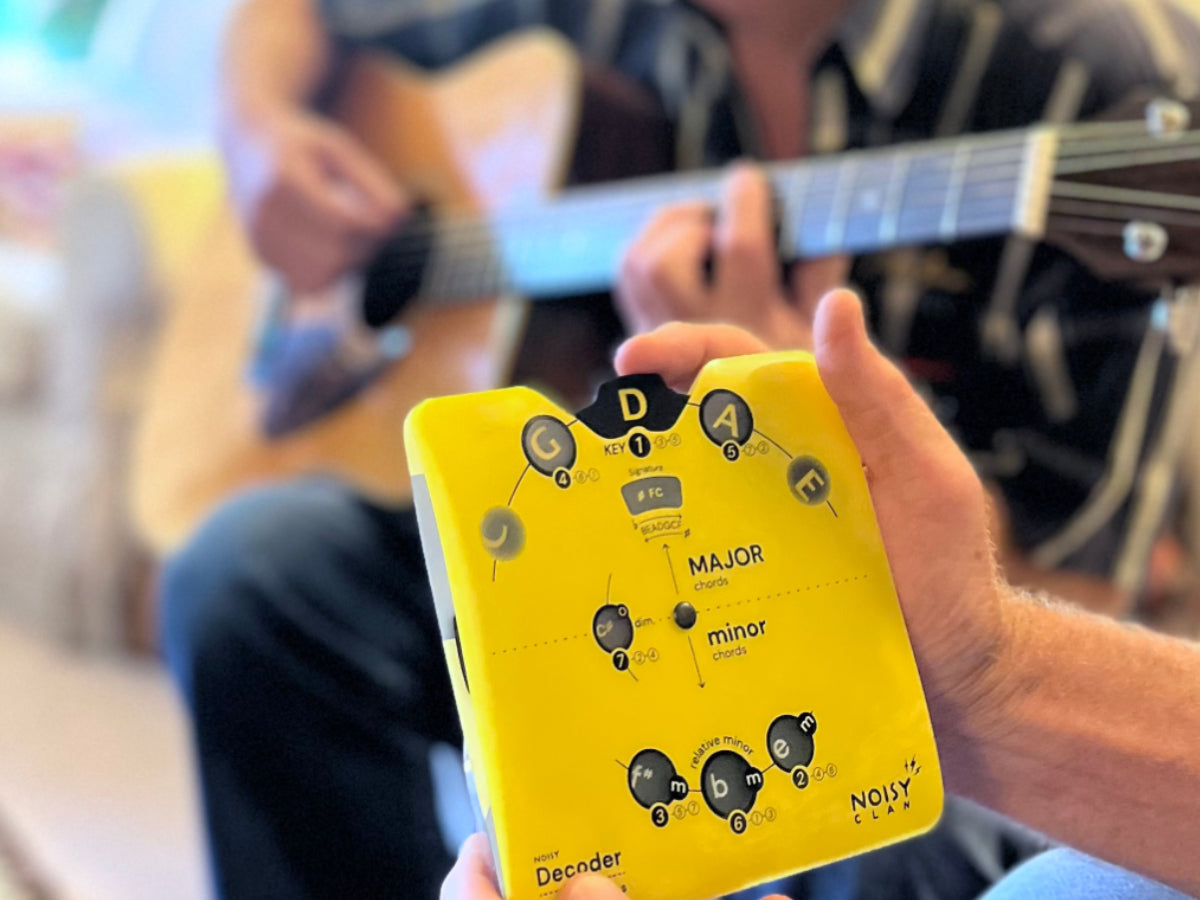Many music learners will speak of music theory with bad memories clouding their judgement. Day after day reciting scales, notes, and most of all… the dreaded mnemonics! But simply put, music theory is important and actually really helpful for musicians!
The circle of fifths is a powerful and fundamental concept in music theory that is pinnacle for playing and composition. The circle helps musicians understand the relationships between key signatures, chords, and scales. Whether you're a seasoned musician or just beginning your musical journey, delving into the circle of fifths can enhance your understanding of music and open up new avenues for creativity. In this blog post, we'll take a deep dive into the circle of fifths, exploring its structure and practical applications.
The Structure of the Circle of Fifths:

The circle of fifths is a circular diagram that arranges all 12 major and minor keys in a specific order. It starts with C major at the top as it is considered the ‘neutral key’ as there are no sharps or flats within the diatonic chords within this key. Each key is positioned a perfect fifth away from the previous.

Whereas, if you rotate the circle counter-clockwise, a flat is added with each key. Making the pitch of each key a perfect fourth higher than the previous key.

7 Ways to Practically Apply the Circle of Fifths to your Playing:
Key Signature:
As mentioned above, the circle of fifths clearly displays the key signatures for each key. By examining the number of sharps or flats in a composition, musicians can quickly identify the key in which it is written. This is particularly helpful for performers, as it allows them to prepare for the specific scales and key-related elements they'll encounter in a piece.
Chord Progressions:
The Circle of Fifths provides valuable insights into chord progressions within a given key. Musicians often refer to the primary chords in a key as the I, IV, and V chords. For example, in the key of C major, these chords would be C major (I), F major (IV), and G major (V). Understanding these relationships aids in composing and improvising chord progressions that sound harmonically pleasing.
Transposition:
Transposing a piece of music involves changing the key while maintaining its overall structure. The circle of fifths is immensely useful for this task. Musicians can simply move around the circle to find a new key, understanding the required sharps or flats and their positions. This is essential for accommodating different instruments or vocal ranges or adapting a piece to suit a particular performer's preference.
Imagine this:
You are jamming with another musician, and suddenly they say “the verse is 1-4-5 in A”, you will know that it is A, D and E!
Modulation:
Modulation refers to a deliberate key change within a composition. Musicians use the circle of fifths to plan and execute smooth modulations. By selecting a key with a closely related key signature, the transition between keys feels natural to the listener. This technique is prevalent in classical music but is also used in various contemporary genres.
Scale Building:
The circle of fifths is a helpful tool for constructing scales. By starting with the tonic note of a key (e.g., C for C major), musicians can follow the pattern of intervals around the circle to determine the notes that make up the major scale. This method applies to both major and minor scales and is a fundamental skill for improvisation and composition.
Songwriting and Composition:
The circle of fifths is a valuable tool for songwriters and composers looking to create engaging melodies and harmonies. It offers a roadmap for exploring different keys and chord progressions, allowing for the development of memorable and emotionally resonant musical compositions.
Harmonic Relationships:
Following on from composition, musicians and composers use the circle of fifths to explore harmonic relationships between keys. For instance, moving from one key to another that is a fifth away can create a sense of tension and resolution. This progression is commonly used to build suspense in music before resolving to a more stable key. Understanding these relationships adds depth and sophistication to compositions.
Noisy Clan’s Decoder: Circle of Fifths
Now we understand that this is not only a condensed version of a centuries old musical concept, but it is also a LOT of information to really digest. So that's where a product design company comes in and designs a product (by musicians) for musicians. This is our Decoder: Circle of Fifths. Designed to simply focus on one key at a time, eliminating all the extra ‘noise’ of a regular circle of fifths diagram.
Rotate the wheel either clockwise or counterclockwise to your desired key.


To maximise our funky fidget spinner, the back also showcases 12 different chord progressions for you to start composing your own music!
So, when you start to Decode(r) the circle of fifths, it is not as theoretically ‘boring’ as one might have thought. Whether you're a learner, composer or a performer, a solid grasp on the circle of fifths can significantly enhance your musical abilities and creativity. Noisy Clan has set their mission to help musicians of all ages and abilities start to comprehend the concept. We believe that music theory should be learnt and understood, but not feared or avoided. Now go forth! Take the fear out of music theory, and PLAY MORE!








